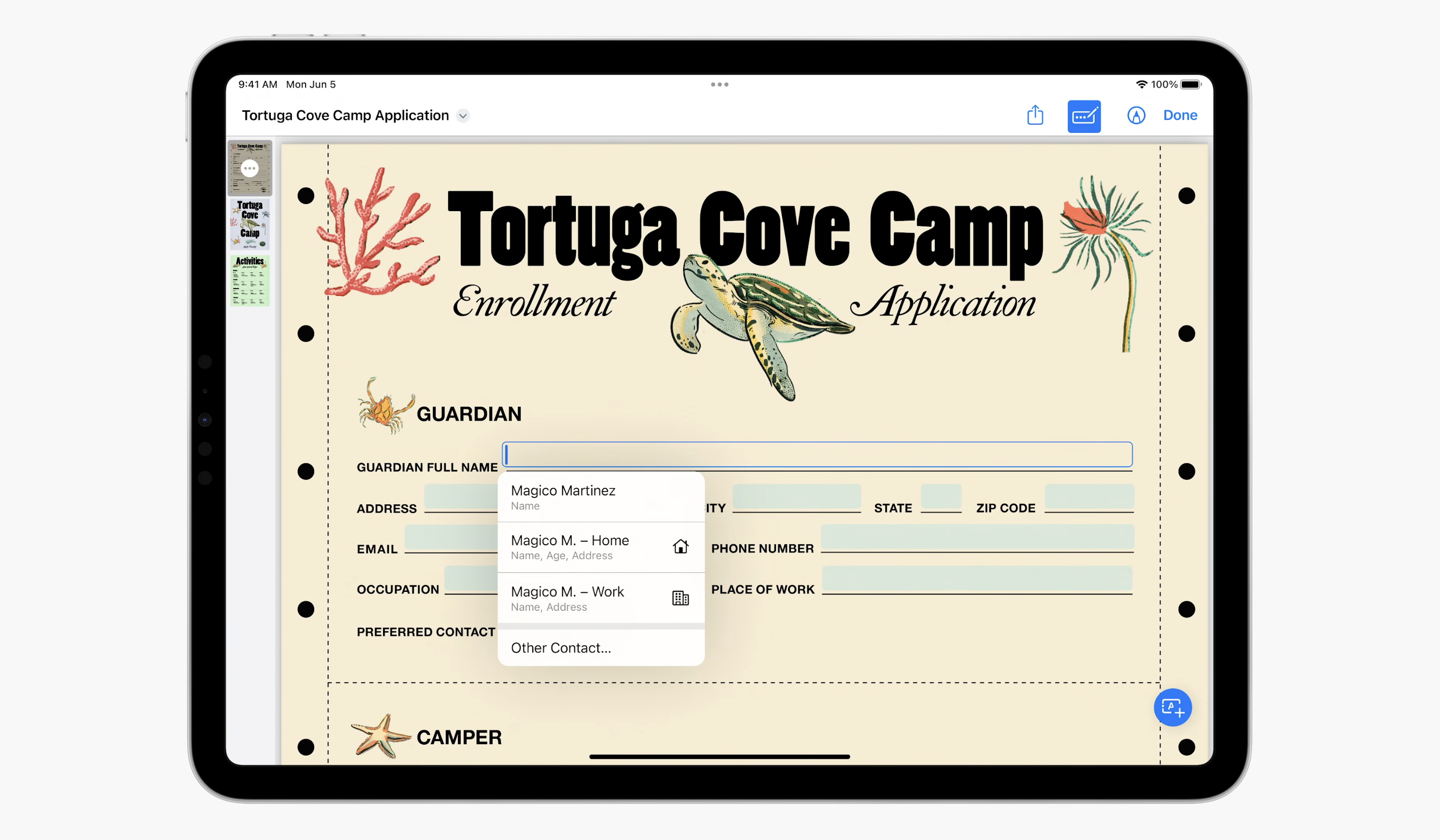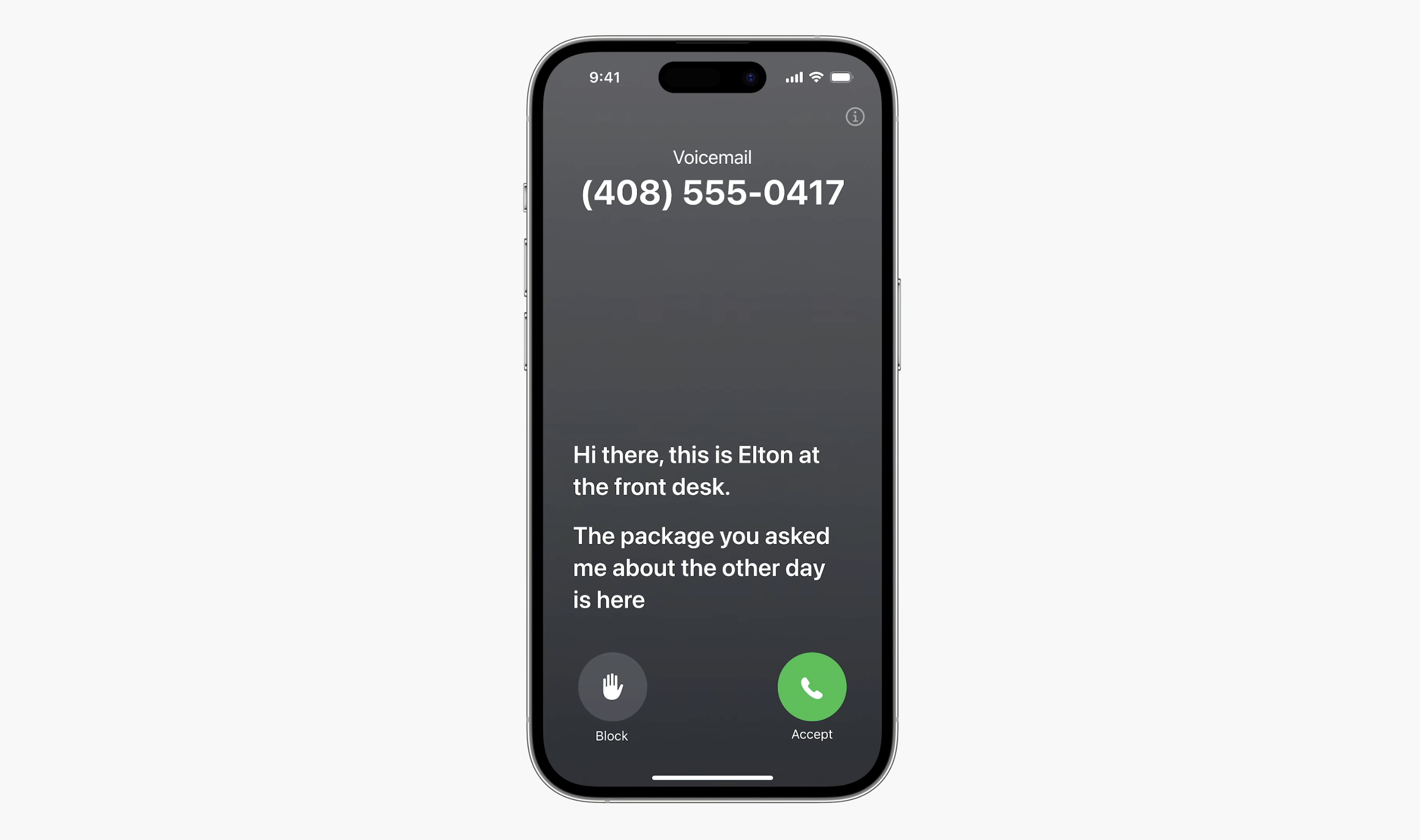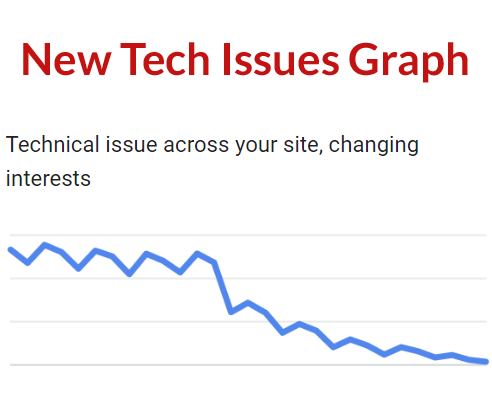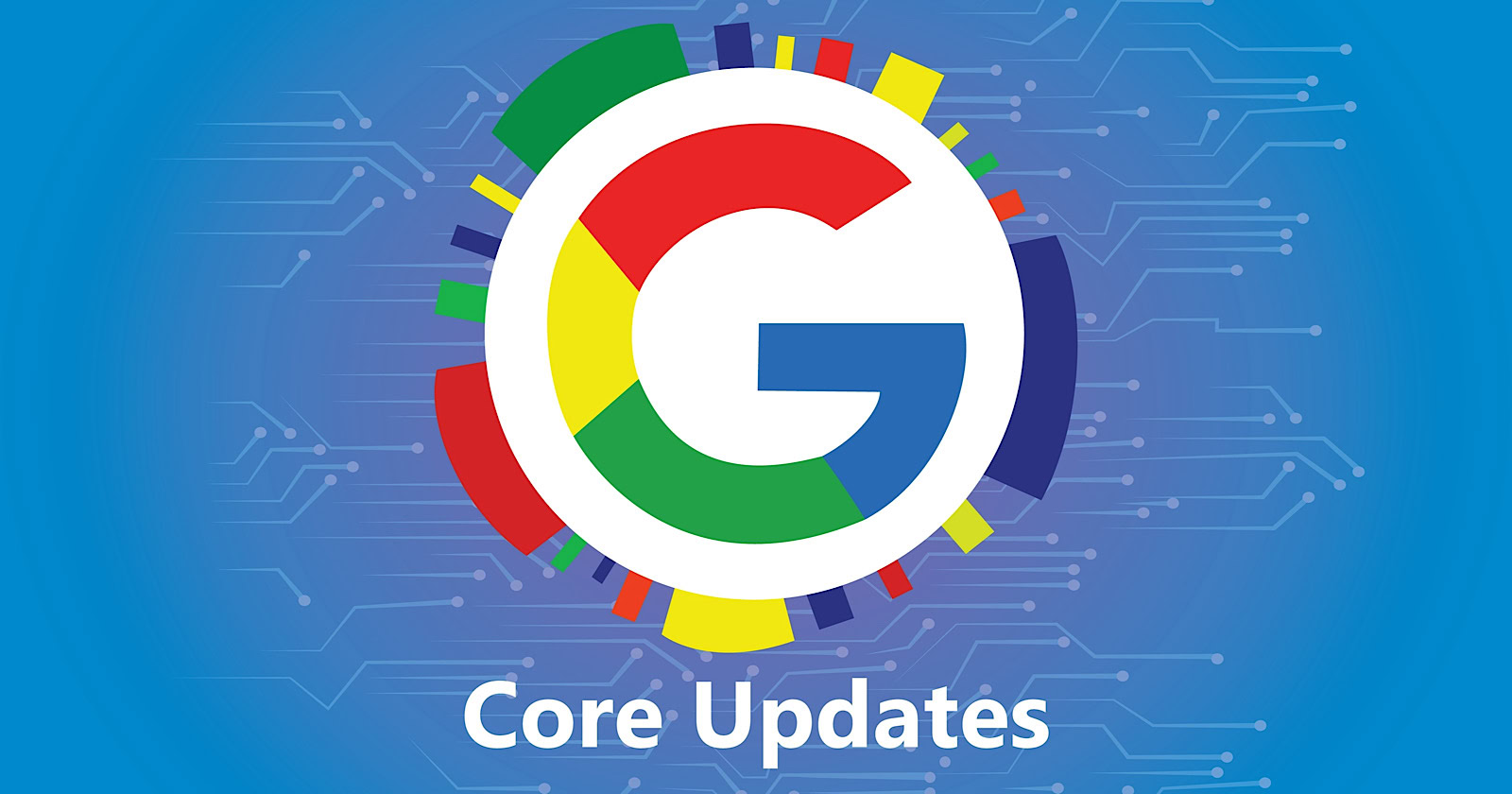SEO
How Apple Could Revolutionize The Way We Work

During the WWDC 2023 keynote, Apple revealed its latest hardware and software advances for professionals using popular devices like Mac desktops, laptops, iPad, and iPhone.
Here’s a look at the WWDC 2023 announcements that could change how we work with machine learning (ML) models, spatial computing, augmented reality, and more.
How Apple Could Succeed Where Others Have Failed
We’ve seen the hype surrounding tech products like Google Glass and Meta Quest: innovations that promised to transform how we interact with the world.
But big tech has failed to deliver a wearable augmented reality device that the masses are willing to adopt.
So why should Apple be different?
Google may have the top search engine, and Meta, the top social network.
On the other hand, Apple has a proven track record spanning over four decades of introducing new technology – namely, hardware – that reshapes aspects of our personal and professional lives.
- In 1977, Apple introduced the Apple II personal computer to the general public.
- In 2001, Apple introduced the iPod, which allowed users to put 1,000 songs into their pocket.
- In 2007, Apple introduced the iPhone, a reinvention of the mobile phone combined with the iPod.
Now, 16 years later, Apple has another innovative new piece of technology designed to propel us into the future.
Transform Productivity With Augmented Reality Workflows
Apple Vision Pro has the potential to shift how people work by blending augmented reality into their daily workflows.
Vision Pro uses a combination of eye tracking, hand gestures, and voice commands as natural inputs, allowing users to manipulate digital content that coexists with the real world.
Powered by Apple’s M series chips, Vision Pro offers high-performance capabilities in a wearable device.
For work, Vision Pro removes the confines of a physical screen for apps, allowing users to place multiple apps around them and enhance their productivity.
Popular productivity apps like Notes, Messages, Safari, and FaceTime could work exceptionally well in this new spatial interface. Users can easily arrange apps at the perfect size without taking space from existing apps.
Documents, notes, messages, and photos would stay up-to-date across Vision Pro, iPhone, iPad, and Mac through iCloud synchronization.
You can also wirelessly project the screen of your Mac into Vision Pro, giving you an enormous private 4K workspace to enhance your workflow.
FaceTime on Vision Pro takes advantage of its spatial abilities, allowing users to join group calls and see everyone life-size with Spatial Audio for more natural conversations. FaceTime also supports app sharing and Screen Share through SharePlay, enabling remote collaboration and reviews.
The seamless ecosystem between Vision Pro, iPhone, iPad, and Mac – coupled with Vision Pro’s performance, comfort, ease of use, and app capabilities – could make it ideal for professionals looking to maximize productivity and teamwork in the office or remotely.
The ability to expand workspaces and multitask freely could boost output and transform how work is done.
Train Machine Learning Models With The Apple M2 Ultra Chip
 Screenshot from Apple/YouTube, June 2023
Screenshot from Apple/YouTube, June 2023Apple’s new M2 Ultra chip could transform machine learning workflows with its unprecedented performance and massive memory.
The M2 Ultra is expected to be 20% faster than M1 Ultra, with a 30% faster GPU and a 40% faster Neural Engine.
But the most significant advantage of M2 Ultra for ML is its increased memory, which could allow the chip to train large neural networks and transformer models that previously required dedicated GPU servers.
In real-world examples, M2 Ultra trained ML models with massive memory requirements that other chips can’t handle due to memory constraints.
With its powerful CPU, large GPU, and enormous memory, the M2 Ultra offers Mac users access to ML processing power previously only available in data centers.
That could accelerate complex artificial intelligence (AI) tasks and open up new possibilities for ML on the desktop.
The M2 Ultra chip is available in the Mac Studio and Mac Pro.
Experience Similar Performance From A MacBook Air As A PC Laptop
 Screenshot from Apple/YouTube, June 2023
Screenshot from Apple/YouTube, June 2023The new 15-inch MacBook Air promises a powerful combination of performance, design, and battery life to outpace similar PC laptops.
It has a thin and lightweight design at just 3 pounds, yet features a gorgeous 15.3-inch Liquid Retina display, MagSafe charging, and all-day battery life of up to 18 hours.
The M2 chip helps ensure incredible performance, with the Air potentially up to twice as fast as the top-selling 15-inch i7 PC laptop.
Its display has twice the resolution and higher brightness, which will help those doing graphic design, video editing, and other creative tasks.
Even with increased performance, the Air should still provide up to 50% more battery life than comparable PC laptops. The thinner and lighter make working from anywhere much simpler.
For business professionals, the Universal Clipboard and Handoff offer a seamless experience from one device to another.
For example, users could copy a photo from their iPhone and paste it into a design on the Air. Or they could start work on a presentation on their Air and finish it on the iPhone.
The new 15-inch Air combines a large, high-res display with the performance of an M2 processor, a thin-and-light design, and an all-day battery – setting a new bar for what a 15-inch laptop can be.
Impress Customers And Colleagues With New macOS Video Conferencing Capabilities
 Screenshot from Apple/YouTube, June 2023
Screenshot from Apple/YouTube, June 2023Apple’s latest macOS update includes innovative new video conferencing features that can boost productivity and effectiveness for business professionals.
The Presenter Overlay feature elevates your presence on video calls by including you on top of any shared screen content. Professionals can remain prominent and easily seen while showcasing presentations, documents, and other work.
The overlay is available in small or large sizes, allowing flexible arrangements that frame shared content beautifully alongside the presenter – allowing users to move, talk and gesture naturally while presenting.
The new Reactions feature lets users add animated effects to provide nonverbal cues on calls. Combined with Presenter Overlay, they can be triggered with simple gestures, making them easy to use during hectic video conferences.
The new macOS features work with all major video conferencing apps, providing tools to engage audiences and provide feedback on any call. The innovative video effects can potentially improve communication, boost team morale, and increase the impact of virtual presentations.
Combined with Apple’s Silicon performance and macOS stability, the new video conferencing enhancements provide business users with helpful productivity aids to enrich their digital meetings and remote collaborations.
Do More With PDFs On iPadOS With Machine Learning
 Screenshot from Apple/YouTube, June 2023
Screenshot from Apple/YouTube, June 2023The new built-in PDF features on iPadOS make it a powerful tool for business professionals.
Thanks to machine learning, iPadOS can detect form fields and auto-fill them with contact information. You can also sign forms digitally with Apple Pencil.
The Notes app now offers better ways to work with PDFs for organization, annotation, and sharing. PDFs stay within notes, giving you extra capabilities alongside the entire document. You can flip pages, annotate directly on PDFs using Apple Pencil, and keep multiple related PDFs in one note for easy access.
For teams, PDFs in Notes enable real-time collaboration where changes and annotations automatically update for collaborators. Live scribbles, stickers, and images inserted into PDFs are instantly visible to others, speeding workflows and decision-making.
Browse The Web With Increased Privacy, Unique Profiles, And Shared Team Passwords
 Screenshot from Apple/YouTube, June 2023
Screenshot from Apple/YouTube, June 2023Apple’s latest macOS updates include several enhancements to Safari that can improve productivity and security for business users.
Safari’s rendering engine, WebKit, appears to get faster with each update. The browser now provides increased speed for loading and interacting with complex websites. Professionals who rely on web apps for work should appreciate Safari’s improved performance.
Privacy enhancements in the new Safari build on its reputation as one of the most privacy-focused browsers.
Features like Private Browsing Lock keep sensitive work tasks separate from personal browsing.
Safari now lets users securely share passwords and passkeys with groups through iCloud Keychain, making it easier for teams to manage login credentials. All sharing is end-to-end encrypted to maintain security.
The new Profiles feature in Safari allows professionals to separate work and personal browsing into separate containers. Each profile has its cookies, history, extensions, tab groups, and favorites, allowing users to easily switch between work and personal accounts on the same websites.
These latest Safari updates offer business professionals improved performance, privacy tools, and the ability to separate work tasks, providing benefits that could enhance company productivity and data security.
Live Voicemail Transcription Ensures You Don’t Miss An Important Discussion
 Screenshot from Apple/YouTube, June 2023
Screenshot from Apple/YouTube, June 2023iOS offers a new Live Voicemail feature to help professionals make better decisions about incoming calls.
When someone calls and leaves a voicemail, you’ll see a live transcription as they speak, allowing you to quickly determine if the call is important enough to take while busy.
If the voicemail indicates an urgent matter, you can pick up the call mid-voicemail.
Live Voicemail transcriptions are done on your device, preserving the privacy of your conversations. This new feature can help business owners and professionals stay on top of critical calls and communicate efficiently.
NameDrop Your Contact Information For Fast Sharing
 Screenshot from Apple/YouTube, June 2023
Screenshot from Apple/YouTube, June 2023The latest AirDrop updates for iPhone provide more straightforward and secure ways for businesses to exchange contact information and content.
NameDrop allows users to swap contact details with a simple gesture, bringing their phones close together. Users can choose which phone numbers and emails to share from their contact cards.
This is a faster, more convenient way to exchange contacts with clients, partners, and colleagues instead of handing over phones or dictating information.
NameDrop also works between an iPhone and Apple Watch, further simplifying contact sharing.
The same gesture can now be used to instantly share photos, videos, and files with AirDrop recipients. Large files will still send securely in full quality even if users move out of AirDrop range, ensuring content is delivered.
These AirDrop updates make collaboration and communication easier for businesses, letting professionals quickly connect with new contacts and swap important content seamlessly.
The gesture-based sharing promotes an effortless, wireless workflow within and between organizations.
Utilize New AirPods Pro Listening Modes For Business Calls And Meetings
 Screenshot from Apple/YouTube, June 2023
Screenshot from Apple/YouTube, June 2023Apple’s new Adaptive Audio and Conversation Awareness features for AirPods Pro could significantly improve focus and productivity for business professionals.
Adaptive Audio dynamically blends Active Noise Cancellation and Transparency modes to match the acoustic conditions of the environment. This helps users stay present while filtering out distracting noises, allowing them to focus better on work tasks and calls.
Personalized Volume leverages machine learning to deliver optimal listening volume based on an individual’s preferences and ambient noise levels. This personalized audio experience can make concentrating and processing information easier for professionals in various work settings.
Conversation Awareness automatically lowers music volume and amplifies voices when it detects speech, helping users stay engaged in conversations while wearing their AirPods. This feature can improve interaction and collaboration with coworkers and clients.
The new listening modes also benefit professionals who take calls and confer with colleagues in public or noisy environments. Adaptive Audio helps reduce background noise to provide a clearer call experience, while the ability to mute and unmute AirPods quickly can simplify participation in calls.
The AirPod Pro’s new features have the potential to enhance work-related tasks for business users by improving audio quality, focus, collaboration, and call participation – ultimately benefitting productivity and performance. The seamless integration across Apple devices also makes the new features convenient for professionals with an ecosystem of Apple products.
Improve Mental Health For Better Professional Performance
 Screenshot from Apple/YouTube, June 2023
Screenshot from Apple/YouTube, June 2023Apple’s new mental health features in watchOS 10 and the Health app have the potential to benefit businesses by improving employees’ emotional well-being and resilience.
Logging emotions and moods discretely from the wrist can help professionals build self-awareness and identify factors impacting their state of mind. Insights into contributors like exercise, mindful minutes, and sleep can reveal lifestyle changes to improve mental health.
Improved emotional awareness, self-management techniques, and treatment of mental health issues can lead to benefits for businesses like increased focus, productivity, and employee performance. Workers with better mental well-being tend to be more engaged, collaborative, and satisfied.
A workplace culture that prioritizes and supports mental health can also boost employee morale, loyalty, and recruitment.
Apple’s new health features aimed at reflecting on emotions, monitoring mental state, and assessing risks for conditions like depression and anxiety could benefit businesses by helping professionals improve their mental health, resilience, and job performance.
The Future Of Work With Apple
Apple’s announcements during the WWDC 2023 keynote showcase a variety of new hardware and software features with the potential to improve how business professionals work meaningfully.
Improvements across multiple platforms indicate Apple’s desire to provide business users and enterprises with productivity tools, performance upgrades, and solutions that embrace a more human-centric approach to work.
From augmented reality workflows with Apple Vision Pro to the performance gains of the M2 Ultra chip, Apple’s latest innovations aim to optimize workflows, enhance security and privacy, and boost productivity.
The possibilities showcased at WWDC 2023 reflect Apple’s vision for the future of work – one where technology empowers humans to spend less time on mundane tasks and more time on meaningful work that leverages their unique talents, expertise, and creativity.
With continued progress and refinement, Apple’s latest hardware and software could set a new standard for business in the years ahead.
Featured image: rafapress/Shutterstock
SEO
Studio By WordPress & Other Free Tools

WordPress announced the rollout of Studio by WordPress, a new local development tool that makes it easy for publishers to not just develop and update websites locally on their desktop or laptop but is also useful for learning how to use WordPress. Learn about Studio and other platforms that are make it easy to develop websites with WordPress right on your desktop.
Local Development Environments
Local Environments are like web hosting spaces on the desktop that can be used to set up a WordPress site. They’re a fantastic way to try out new WordPress themes and plugins to learn how they work without messing up a live website or publishing something to the web that might get accidentally indexed by Google. They are also useful for testing if an updated plugin causes a conflict with other plugins on a website, which is useful for testing updated plugins offline before committing to updating the plugins on a live website.
Studio joins a list of popular local development environments that are specific for WordPress and more advanced platforms that are that can be used for WordPress on the desktop but have greater flexibility and options but may be harder to use for non-developers.
Desktop WordPress Development Environments
There are currently a few local environments that are specific to WordPress. The advantages of using a dedicated WordPress environment is that they make it easy to start creating with WordPress for those who only need to work with WordPress sites and nothing more complicated than that.
Studio By WordPress.com
Studio is an open source project that allows developers and publishers to set up a WordPress site on their desktop in order to design, test or learn how to use WordPress.
According to the WordPress announcement:
“Say goodbye to manual tool configuration, slow site setup, and clunky local development workflows, and say hello to Studio by WordPress.com, our new, free, open source local WordPress development environment.
Once you have a local site running, you can access WP Admin, the Site Editor, global styles, and patterns, all with just one click—and without needing to remember and enter a username or password.”
The goal of Studio is to be a simple and fast way to create WordPress sites on the desktop. It’s currently available for use on a Mac and a Windows version is coming soon.
Download the Mac version here.
Other Popular WordPress Local Development Environments
DevKinsta
DevKinsta, developed by Kinsta managed web host, is another development environment that’s specifically dedicated for quickly designing and testing WordPress sites on the desktop. It’s a popular choice that many developers endorse.
That makes it a great tool for publishers, SEOs and developers who just want a tool to do one thing, create WordPress sites. This makes DevKinsta a solid consideration for anyone who is serious about developing WordPress sites or just wants to learn how to use WordPress, especially the latest Gutenberg Blocks environment.
Download DevKinsta for free here.
Local WP
Local WP is a popular desktop development environment specifically made for WordPress users by WP Engine, a managed WordPress hosting provider.
Useful Features of Local WP
Local WP has multiple features that make it useful beyond simply developing and testing WordPress websites.
- Image Optimizer
It features a free image optimizer add-on that optimizes images on your desktop which should be popular for those who are unable to optimize images on their own. - Upload Backups
Another handy feature is the ability to upload backups to Dropbox and Google Drive. - Link Checker
The tool has a built-in link checker that scans your local version of the website to identify broken links. This is a great way to check a site offline without using server resources and potentially slowing down your live site. - Import & Export Sites
This has the super-handy ability to import WordPress website files and export them so that you can work on your current WordPress site on your desktop, test out new plugins or themes and if you’re ready you can upload the files to your website.
Advanced Local Development Environments
There are other local development environments that are not specific for WordPress but are nonetheless useful for designing and testing WordPress sites on the desktop. These tools are more advanced and are popular with developers who appreciate the freedom and options available in these platforms.
DDEV with Docker
An open source app that makes it easy to use the Docker software containerization to quickly install a content management system and start working, without having to deal with the Docker learning curve.
Download DDEV With Docker here.
Laragon
Laragon is a free local development environment that was recommended to me by someone who is an advanced coder because they said that it’s easy to use and fairly intuitive. They were right. I’ve used it and have had good experiences with it. It’s not a WordPress-specific tool so that must be kept in mind.
Laragon describes itself as an easy to use alternative to XXAMPP and WAMP.
Mamp
Mamp is a local development platform that’s popular with advanced coders and is available for Mac and Windows.
David McCan (Facebook profile), a WordPress trainer who writes about advanced WordPress topics on WebTNG shared his experience with MAMP.
“MAMP is pretty easy to setup and it provides a full range of features. I currently have 51 local sites which are development versions of my production sites, that I use for testing plugins, and periodically use for new beta versions of WordPress core. It is easy to clone sites also. I haven’t noticed any system slowdown or lag.”
WAMP And XAMPP
WAMP is a Windows only development environment that’s popular with developers and WordPress theme and plugin publishers.
XAMPP is a PHP development platform that can be used on Linux, Mac, and Windows desktops.
So Many Local Development Platforms
Studio by WordPress.com is an exciting new local development platform and I’m looking forward to trying it out. But it’s not the only one so it may be useful to try out different solutions to see which one works best for you.
Read more about Studio by WordPress:
Meet Studio by WordPress.com—a fast, free way to develop locally with WordPress
Featured Image by Shutterstock/Wpadington
SEO
Big Update To Google’s Ranking Drop Documentation

Google updated their guidance with five changes on how to debug ranking drops. The new version contains over 400 more words that address small and large ranking drops. There’s room to quibble about some of the changes but overall the revised version is a step up from what it replaced.
Change# 1: Downplays Fixing Traffic Drops
The opening sentence was changed so that it offers less hope for bouncing back from an algorithmic traffic drop. Google also joined two sentences into one sentence in the revised version of the documentation.
The documentation previously said that most traffic drops can be reversed and that identifying the reasons for a drop aren’t straightforward. The part about most of them can be reversed was completely removed.
Here is the original two sentences:
“A drop in organic Search traffic can happen for several reasons, and most of them can be reversed. It may not be straightforward to understand what exactly happened to your site”
Now there’s no hope offered for “most of them can be reversed” and more emphasis on understanding what happened is not straightforward.
This is the new guidance
“A drop in organic Search traffic can happen for several reasons, and it may not be straightforward to understand what exactly happened to your site.”
Change #2 Security Or Spam Issues
Google updated the traffic graph illustrations so that they precisely align with the causes for each kind of traffic decline.
The previous version of the graph was labeled:
“Site-level technical issue (Manual Action, strong algorithmic changes)”
The problem with the previous label is that manual actions and strong algorithmic changes are not technical issues and the new version fixes that issue.
The updated version now reads:
“Large drop from an algorithmic update, site-wide security or spam issue”
Change #3 Technical Issues
There’s one more change to a graph label, also to make it more accurate.
This is how the previous graph was labeled:
“Page-level technical issue (algorithmic changes, market disruption)”
The updated graph is now labeled:
“Technical issue across your site, changing interests”
Now the graph and label are more specific as a sitewide change and “changing interests” is more general and covers a wider range of changes than market disruption. Changing interests includes market disruption (where a new product makes a previous one obsolete or less desirable) but it also includes products that go out of style or loses their trendiness.

Change #4 Google Adds New Guidance For Algorithmic Changes
The biggest change by far is their brand new section for algorithmic changes which replaces two smaller sections, one about policy violations and manual actions and a second one about algorithm changes.
The old version of this one section had 108 words. The updated version contains 443 words.
A section that’s particularly helpful is where the guidance splits algorithmic update damage into two categories.
Two New Categories:
- Small drop in position? For example, dropping from position 2 to 4.
- Large drop in position? For example, dropping from position 4 to 29.
The two new categories are perfect and align with what I’ve seen in the search results for sites that have lost rankings. The reasons for dropping up and down within the top ten are different from the reasons why a site drops completely out of the top ten.
I don’t agree with the guidance for large drops. They recommend reviewing your site for large drops, which is good advice for some sites that have lost rankings. But in other cases there’s nothing wrong with the site and this is where less experienced SEOs tend to be unable to fix the problems because there’s nothing wrong with the site. Recommendations for improving EEAT, adding author bios or filing link disavows do not solve what’s going on because there’s nothing wrong with the site. The problem is something else in some of the cases.
Here is the new guidance for debugging search position drops:
“Algorithmic update
Google is always improving how it assesses content and updating its search ranking and serving algorithms accordingly; core updates and other smaller updates may change how some pages perform in Google Search results. We post about notable improvements to our systems on our list of ranking updates page; check it to see if there’s anything that’s applicable to your site.If you suspect a drop in traffic is due to an algorithmic update, it’s important to understand that there might not be anything fundamentally wrong with your content. To determine whether you need to make a change, review your top pages in Search Console and assess how they were ranking:
Small drop in position? For example, dropping from position 2 to 4.
Large drop in position? For example, dropping from position 4 to 29.Keep in mind that positions aren’t static or fixed in place. Google’s search results are dynamic in nature because the open web itself is constantly changing with new and updated content. This constant change can cause both gains and drops in organic Search traffic.
Small drop in position
A small drop in position is when there’s a small shift in position in the top results (for example, dropping from position 2 to 4 for a search query). In Search Console, you might see a noticeable drop in traffic without a big change in impressions.Small fluctuations in position can happen at any time (including moving back up in position, without you needing to do anything). In fact, we recommend avoiding making radical changes if your page is already performing well.
Large drop in position
A large drop in position is when you see a notable drop out of the top results for a wide range of terms (for example, dropping from the top 10 results to position 29).In cases like this, self-assess your whole website overall (not just individual pages) to make sure it’s helpful, reliable and people-first. If you’ve made changes to your site, it may take time to see an effect: some changes can take effect in a few days, while others could take several months. For example, it may take months before our systems determine that a site is now producing helpful content in the long term. In general, you’ll likely want to wait a few weeks to analyze your site in Search Console again to see if your efforts had a beneficial effect on ranking position.
Keep in mind that there’s no guarantee that changes you make to your website will result in noticeable impact in search results. If there’s more deserving content, it will continue to rank well with our systems.”
Change #5 Trivial Changes
The rest of the changes are relatively trivial but nonetheless makes the documentation more precise.
For example, one of the headings was changed from this:
You recently moved your site
To this new heading:
Site moves and migrations
Google’s Updated Ranking Drops Documentation
Google’s updated documentation is a well thought out but I think that the recommendations for large algorithmic drops are helpful for some cases and not helpful for other cases. I have 25 years of SEO experience and have experienced every single Google algorithm update. There are certain updates where the problem is not solved by trying to fix things and Google’s guidance used to be that sometimes there’s nothing to fix. The documentation is better but in my opinion it can be improved even further.
Read the new documentation here:
Debugging drops in Google Search traffic
Review the previous documentation:
Internet Archive Wayback Machine: Debugging drops in Google Search traffic
Featured Image by Shutterstock/Tomacco
SEO
Google March 2024 Core Update Officially Completed A Week Ago

Google has officially completed its March 2024 Core Update, ending over a month of ranking volatility across the web.
However, Google didn’t confirm the rollout’s conclusion on its data anomaly page until April 26—a whole week after the update was completed on April 19.
Many in the SEO community had been speculating for days about whether the turbulent update had wrapped up.
The delayed transparency exemplifies Google’s communication issues with publishers and the need for clarity during core updates
Google March 2024 Core Update Timeline & Status
First announced on March 5, the core algorithm update is complete as of April 19. It took 45 days to complete.
Unlike more routine core refreshes, Google warned this one was more complex.
Google’s documentation reads:
“As this is a complex update, the rollout may take up to a month. It’s likely there will be more fluctuations in rankings than with a regular core update, as different systems get fully updated and reinforce each other.”
The aftershocks were tangible, with some websites reporting losses of over 60% of their organic search traffic, according to data from industry observers.
The ripple effects also led to the deindexing of hundreds of sites that were allegedly violating Google’s guidelines.
Addressing Manipulation Attempts
In its official guidance, Google highlighted the criteria it looks for when targeting link spam and manipulation attempts:
- Creating “low-value content” purely to garner manipulative links and inflate rankings.
- Links intended to boost sites’ rankings artificially, including manipulative outgoing links.
- The “repurposing” of expired domains with radically different content to game search visibility.
The updated guidelines warn:
“Any links that are intended to manipulate rankings in Google Search results may be considered link spam. This includes any behavior that manipulates links to your site or outgoing links from your site.”
John Mueller, a Search Advocate at Google, responded to the turbulence by advising publishers not to make rash changes while the core update was ongoing.
However, he suggested sites could proactively fix issues like unnatural paid links.
“If you have noticed things that are worth improving on your site, I’d go ahead and get things done. The idea is not to make changes just for search engines, right? Your users will be happy if you can make things better even if search engines haven’t updated their view of your site yet.”
Emphasizing Quality Over Links
The core update made notable changes to how Google ranks websites.
Most significantly, Google reduced the importance of links in determining a website’s ranking.
In contrast to the description of links as “an important factor in determining relevancy,” Google’s updated spam policies stripped away the “important” designation, simply calling links “a factor.”
This change aligns with Google’s Gary Illyes’ statements that links aren’t among the top three most influential ranking signals.
Instead, Google is giving more weight to quality, credibility, and substantive content.
Consequently, long-running campaigns favoring low-quality link acquisition and keyword optimizations have been demoted.
With the update complete, SEOs and publishers are left to audit their strategies and websites to ensure alignment with Google’s new perspective on ranking.
Core Update Feedback
Google has opened a ranking feedback form related to this core update.
You can use this form until May 31 to provide feedback to Google’s Search team about any issues noticed after the core update.
While the feedback provided won’t be used to make changes for specific queries or websites, Google says it may help inform general improvements to its search ranking systems for future updates.
Google also updated its help documentation on “Debugging drops in Google Search traffic” to help people understand ranking changes after a core update.
Featured Image: Rohit-Tripathi/Shutterstock
FAQ
After the update, what steps should websites take to align with Google’s new ranking criteria?
After Google’s March 2024 Core Update, websites should:
- Improve the quality, trustworthiness, and depth of their website content.
- Stop heavily focusing on getting as many links as possible and prioritize relevant, high-quality links instead.
- Fix any shady or spam-like SEO tactics on their sites.
- Carefully review their SEO strategies to ensure they follow Google’s new guidelines.
-

 PPC5 days ago
PPC5 days ago10 Most Effective Franchise Marketing Strategies
-

 SEARCHENGINES6 days ago
SEARCHENGINES6 days agoGoogle Needs Very Few Links To Rank Pages; Links Are Less Important
-

 SEO6 days ago
SEO6 days agoHow to Become an SEO Lead (10 Tips That Advanced My Career)
-

 MARKETING6 days ago
MARKETING6 days agoHow to Use AI For a More Effective Social Media Strategy, According to Ross Simmonds
-

 PPC6 days ago
PPC6 days agoBiggest Trends, Challenges, & Strategies for Success
-

 SEARCHENGINES4 days ago
SEARCHENGINES4 days agoGoogle Won’t Change The 301 Signals For Ranking & SEO
-

 SEARCHENGINES5 days ago
SEARCHENGINES5 days agoGoogle Again Says Ignore Link Spam Especially To 404 Pages
-

 SEO3 days ago
SEO3 days agobrightonSEO Live Blog












![The Current State of Google’s Search Generative Experience [What It Means for SEO in 2024] person typing on laptop with](https://articles.entireweb.com/wp-content/uploads/2024/04/The-Current-State-of-Googles-Search-Generative-Experience-What-It.webp-400x240.webp)
![The Current State of Google’s Search Generative Experience [What It Means for SEO in 2024] person typing on laptop with](https://articles.entireweb.com/wp-content/uploads/2024/04/The-Current-State-of-Googles-Search-Generative-Experience-What-It.webp-80x80.webp)

